Sprawling across 40,000 sq.meters , the temple complex of Avudaiyarkoil is enclosed within a fortress like stone compound . It is considered one of the most magnificent offerings to Siva in Tamil Nadu , a land rich in heritage monuments . Though well known within the State for its sculptures and murals , the name
Sprawling across 40,000 sq.meters , the temple complex of Avudaiyarkoil is enclosed within a fortress like stone compound . It is considered one of the most magnificent offerings to Siva in Tamil Nadu , a land rich in heritage monuments . Though well known within the State for its sculptures and murals , the name of this Temple rings no bells beyond the region. Which is a pity . For, it is an institution replete with unique lores, legends, traditions and history in addition to being a showcase for the high artistic skills of the unnamed artisans of yore .
The structure, as it stands today, is mostly of 15th Century vintage , with architectural contributions from many ruling clans like Pandyas, Vijayanagara Nayakas , Thanjavur Mahrattas, Tondaimans , Sethupathis and some Zamindars . But the core shrine dates from the period of Manikkavacakar , with whose life the temple is intrinsically linked .
Manikkavacakar , a celebrated poet-saint of 9th Cent CE , is the author of the religious paeans, Tiruvacakam and Tirukkovaiyar , that make up the 8th volume of the “Tirumurai” compendium . His Tiruvacakam poems rank as the most moving hymns in Tamil Language , proverbially vouched for as : “ The heart that does not melt on hearing Tiruvacakam will not melt for anything . “
( Note : “Tirumuraigal” is the 12-Volume Sacred Anthology of hymns in praise of Siva , which , along with Vedas , Agamas and the Saiva Siddhanta Sastras form the basis of the Tamil Shaiva Siddhantam School of philosophy . )
The core shrine is believed to be built by Manikkavacakar after he had the transcedental experience of being “subsumed” by Siva under a Kurunthai tree ( Atalantia monophylla ) in this place .
The entrance to the edifice is, unusually, by the south portal – through a pavilion called Raghunatha Boopala Mantapam, built in the 17th century . The star attractions in this pavilion are two huge , exquisitely carved , monolithic pillar sculptures of Rana Veerabhadra and Aghora Veerabhadra that stand facing inwards . The other magnum opus is the Virat Swaroopam of Siva on the ceiling , a mural 18ft in length , painted with mineral and botanic dyes .
The porch leads to the Gopuram , which was originally 5 tiered but was raised to 7 tiers in the 20th Century . Past the Gopuram lies a series of halls called Sabhas leading to the sanctum . The portal of each sabha is bordered with a prabhavali sporting a particular number of lamps , the number differing at each stage ( 81- 224-11-36-51 ). These are the sacred numbers related to the “Tattvas” expounded in Saiva Siddhantham . Serious seekers of spiritual and yogic knowledge are expected to dwell on these as they walk towards the sanctum .
The first hall is the Kanaka Sabha , also called Pancakshara Mantapam . The pillars in this hall merit a lot more than a cursory glance . Each one is differently adorned with sculptures , big or small, of deities , royals , Mythical creatures , yogis etc. There are a number of excellently carved lifesized horsemen on prancing horses too – one of whom is special , called Kuthiraisami ( The Divine Horseman) . He is Siva in disguise, illustrating an important scene in the foundation legend of this temple . To the left of the hall branches off a corridor , leading to the Shrine of Manikkavacakar himself . In this temple , he is treated like a deity too and accorded due worship.
The next hall is the Natana Sabha aka Nritta Mantapam where , among the many the sculptures , that of a folksy Kirata couple ( from Kiratarjuniyam legend ) catches the eye . Murals on walls and ceilings are plentiful here .
Deva Sabha , aka Sundara Pandya Mantapam comes next , wherein are enshrined , in individual sancta , Vinayaka , Subrahmanya , Nataraja, Veerabhadra , the Utsava Murthy ( processional bronze image) and , on a special raised mantap , a tree sculpted in stone . This , reportedly , is the very spot where Manikkavacakar found epiphany . Close to this is the shrine of the Goddess , Parvathi as Yogambal, said to be in deep meditation . Among the lovely pillar figures in this hall are the best portrait sculptures of Manikkavacakar , before and after his enlightenment .
Next in line is the Satt Sabha aka Amutha Mantapam where a wide stone platform functions as the Naivedya peetam . Food offerings for the presiding deity are spread on this , the daily mid day offering being steaming hot rice with Bitter Gourd and Greens ( Amaranthus) . Reportedly, the fire hearth in the temple kitchen has never been put out for a thousand years now.
Chit Sabha , which is next in line , is the antarala where the priests and hymn singers stand .
The series of Sabhas ends in Ananda Sabha , which is the Garbhagriham.
There is one more important mantapam called Thyagaraja Mantapam beside the linear series of Sabhas . Here too are elaborately carved pillars , some composite and musical , and ceiling bays hung with stone chains . It is from here that the Utsava Murthi starts its processions around the town’s streets during festivals ( ratha yatras) . Close by is the temple tank , named Agni Teertham.
All the Sabhas/ Mantapas are richly adorned with sculptural marvels chiselled with exemplary attention to detailing . From veins and fingernails to fabric folds and embroidery , the artisans have worked wonders in hard granite . Most walls and ceilings are covered with murals from various periods, in varying states of preservation. A majority of them are painted Narratives of puranas and local legends in picture book style , with text running underneath . Interspersed with murals are ceiling bays with slabs of intricately sculpted grids . Scattered around walls are also epigraphic records from different periods of the temple’s history.
One architectural feature this temple is justly famous for , is the composition of the eaves (Kodungai in Tamil ) Mimicking the wooden roof supports that were common in the architecture of the time, stone has been coaxed to look like timber , down to the last rafter, reaper, rope and rivet ! An apocryphal folk tale has it that a disbelieving British Officer once shot his gun at the ‘carpentry’ hoping to prove it cannot be stone , only to be humiliated by the expertise of those ancient sculptors! It is said that temple builders of bygone times always signed contracts for work with the clause “except replication of the Kodungais of Avudaiyarkoil .” For Art students and heritage enthusiasts, a tour in this temple would be like diving into a treasure chest .
Set deep within the folds of such marvelous creations of human hand , at the epicenter of all the astounding offerings of high devotion and Faith , is the modest garbhagriham , facing South , with a square yoni peetam ( called Avudai in Tamil) . The prabhavali shows the 27 asterisms of Indian astrology , above which are three points of light : Surya , Chandra and Jiva. In front , glow two perpetual lamps . And upon the peetam is ………nothing .
Atmanathaswami , the presiding deity , is not a Lingam as in all Siva temples . He is just imperceptible, beyond the ken of all the doors of human perception. For the purpose of physical puja ( pushpanjali and abhishekam) , a gold Kuvalai ( meaning, a cylindrical vessel ) is upturned on the peetam , outlining the shape of a lingam . The Deepa arati that is waved around it is not brought out of the garbhagriham . Pilgrims only receive the holy ash ( Vibhuti )as benediction.
As a corollary to this divine invisibility , Devi Yogambal too is aniconic , represented just by a pair of golden feet on a sahasra-dala yantra . And the feet can be viewed by pilgrims only through a small lateral window or as a reflection in a mirror .
Whats more , this temple of the A-roopa ( Formless) Siva has none of the usual features of a standard Siva temple of South : no Nandi , no Dakshinamurthi , no Dwajasthambham , no Navagraha sannidhi and no Chandikeshwara .
Usually in other temples , the fixed , aniconic Lingam has a representative Utsava Murthy , to be taken out in processions . Here , Siva-Parvathi have no Utsava Murthis either . That honour is given to solely to Manikkavacakar .
Daily Pujas are not suspended during Eclipse times too , which again is unique to this temple . The hereditary priests belong to a special class of learned men called Nambiyars .
Speaking of aniconic representation , the famous temple in Chidambaram too has a sanctum called Chidambara Rahasyam where , under a festoon of gold Bilva leaves , there is emptiness . And in Sri Kalahasti also , the “Lingam” is invisible. However, in both these shrines , Siva is propitiated as an embodiment of an Elemental Energy : Akasha and Vayu respectively, hence formless . Whereas , Atmanathaswami of Avudayarkoil is considered to be that Principle which is beyond any such descriptive labels , that which is omniscient , omnipotent , omnipresent and beyond perception.
“ vinnirrainthu mannirrainthu mikkaai vilangoliliyaai
Ennirranthathellai ilaathane …”
– Manikkavacakar
( meaning = Pervading the sky , the earth and everything else too
As the Light suffusing everything , Boundless , beyond all measures and limitations ….)
In Eastern thought , “God” cannot be described in any way . While Advaitha philosophy holds the view that everything is The One , Southern Saiva Siddhanta makes a slight departure and postulates that The Infinite called Sivam and the created Soul are dual realities but miscible through Divine Grace ( arul ). And that the wonderous jagat is not ‘Illusion’ but ‘Impermanence’ , hence unworthy of investing in .
……yaavaiyumai allaiyumai sothiyane thunnirule
Thonra perumayane , aathiyane antham naduvagi allane ….
– Manikkavacakar
(meaning = being Everything and Nothing , Being Light and Darkness , the Never-Born Primeval One , without end or middle …..)
Manikkavacakar , by Divine Grace , went from the worldly to the spiritual in an instant . And then spent his life preaching the easiest way to attain the Truth – Bhakthi. His songs , the fervent cries of his soul , echo through the centuries ,touching everyone , irrespective of their emotional and intellectual capabilities . Traversing physically through the overwhelming majesty and beauty of this stone temple to finally arrive at a quiet space where the focus is on Nothing-ness could be a metaphor for the innate meaning of the hymn ( above) being sung to The Presence , Atmanathar , after the Aarati.
That Manikkavacakar’s emancipation happened at this place is significant in itself . Though it is now called Avudaiyarkoil ( after the Avudai or peetam in the sanctum ) , the place was known as Tiru Perunthurai and Sivapuram during Manikkavacakar’s time . “Perunthurai” means the great port or bank ( Tiru is an honorific like Sri). This ‘port’ denotes the space from where a seeker embarks on an exploratory journey across a vast , mystical sea in the hope of attaining Sivam .
Maasattra sothi malarntha malarccudare
Tesane thenaar amuthe Sivapurane !
Pasamam pattraruthu paarikkum aariyane
Nesa-arul purinthu nenjil vanjangkeda
Perathu ninra perungkarunai perare !
-Manikkavacakar
( meaning= Blemishless , blossoming Light , O Tejas , sweet ambrosia of Sivapuram , the Noble One who severs the fetters of all attachment , O flood of love and kindness, bless that the negativities of the mind be cleared away ).
May The Grace guide us.
(Avudayarkoil is in Pudukkottai District of Tamil Nadu , 14 Kms from Aranthangi Town , about 100Km from Trichy . )

Brief Note on Manikkavacakar .
Born in TiruVathaur, he was referred to only as Vathavurar ; the birth name remains unknown. Manikkavacakar , meaning “He whose utterances are like previous gems” , is the moniker he earned later for his superb hymns .
The foundation legend of Avudaikyarkoil is as follows: Recognised for his military acumen when serving in the court of Arimardana Pandyan , he was despatched by the king to procure horses for the army . On his way , passing through Sivapuram , he had a spiritual experience under the Kurunthai tree and received initiation from Siva himself . Whereupon , Vathavurar spent the money meant for buying horses on building a shrine for Siva at the site of his enlightenment . The king was not amused,of course, and took punitive measures against him . To save him, Siva , in the guise of a horse trader , delivered illusory horses to the king . Subsequently , more trouble followed occassioning more Siva Leelas till Vathavurar’s saintliness was proved to the world and he became an itinerant minstrel singing the sweetest of songs .
Legend has it that Siva manifested as a scribe and wrote down 658 poems as he sang , while in Chidambaram . He captioned the collection as Tiruvacakam ( Sacred Utterances) and signed the palm leaf manuscript thus : “as dictated by Manikkavacakar , inscribed by the resident of Tirucchittrambalam “ ( ie the Chit Sabha of Chidambaram ) .
It is tradition in all Siva temples of Tamil Nadu to sing Manikkavacakar’s hymns upon opening the temple doors at dawn and before shutting down at night . “Tiru Palliyezhucchi” is the waking up hymn and “Tiru Ponnoosal” is the lullaby .
Iconographically , Manikkavacakar is represented as a young ascetic, clad in a short wraparound , with rudraksha on his head, neck and wrists , standing with one hand in upadesa mudra and the other holding a palm leaf book .
His “Tiruvembavai “ , a celebratory hymn , is sung ( along with Andal’s Tiruppavai ) by bhajan groups , every dawn of Margazhi month .( mid December – mid January )
The full hagiographic account of Manikkavacakar’s life can be found in “Tiruvilayadal Puranam “ (Siva Leelas) written in 16th Cent. by Paranjothi Munivar .
Tiruvacakam was first translated into English by G.U.Pope in 1900 .
While Tiruvacakam is mystical and often abstract , songs in the Tirukovaiyaru category deal with love for a tangible icon , a Siva with attributes , as sung with bhakthi by ordinary folk while indulging in mundane activities like playing ball , pounding the pestle , bathing in river , gossipping etc.
Though Manikkavacakar is not counted among the 63 Nayanars , he is revered as one of “The Foremost Four” of Tirumurai authors , the other three being Tiru Gnana Sambanthar, Tirunavukkarasar and Sundaramurthi Swamigal. The hymns of all four are part of daily worship in all Shiva temples of Tamil Nadu where the Six-Times-a-Day puja tradition is followed . Singers specialising in chanting these are called Oduvars and each temple has its own official Oduvar .
_________________________

 Scared Space
Scared Space 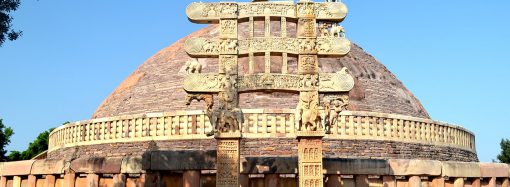
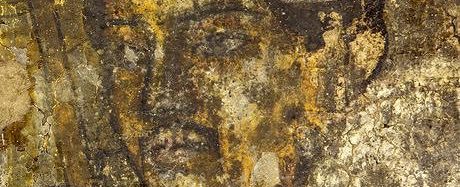
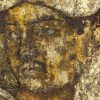
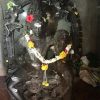
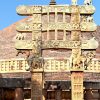

5 Comments
Dr Mahadevan.R
July 14, 2021, 6:24 pmThe article on avudaiyar koil is most informative and interesting. Description of the various mandapams and their architectural grandeur is realistic. Reference to Saiva Siddhanta concepts appropriate. Kindles the desire to visit the place, in the readers
REPLYVidya M @Dr Mahadevan.R
July 19, 2021, 10:48 amThank you for the encouraging words . 🙏
REPLY